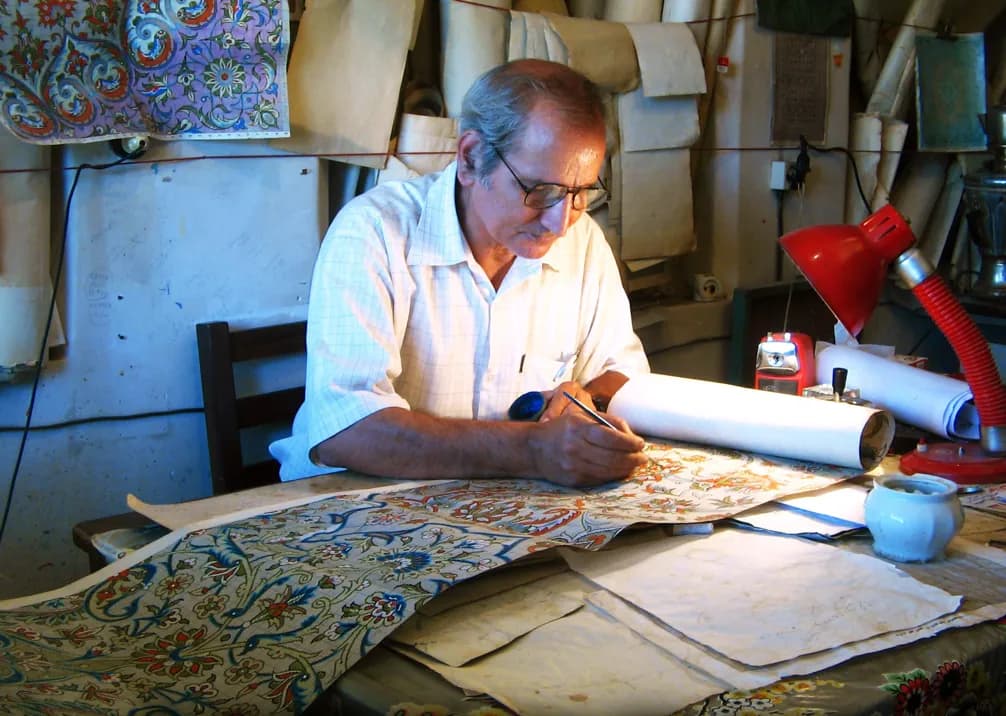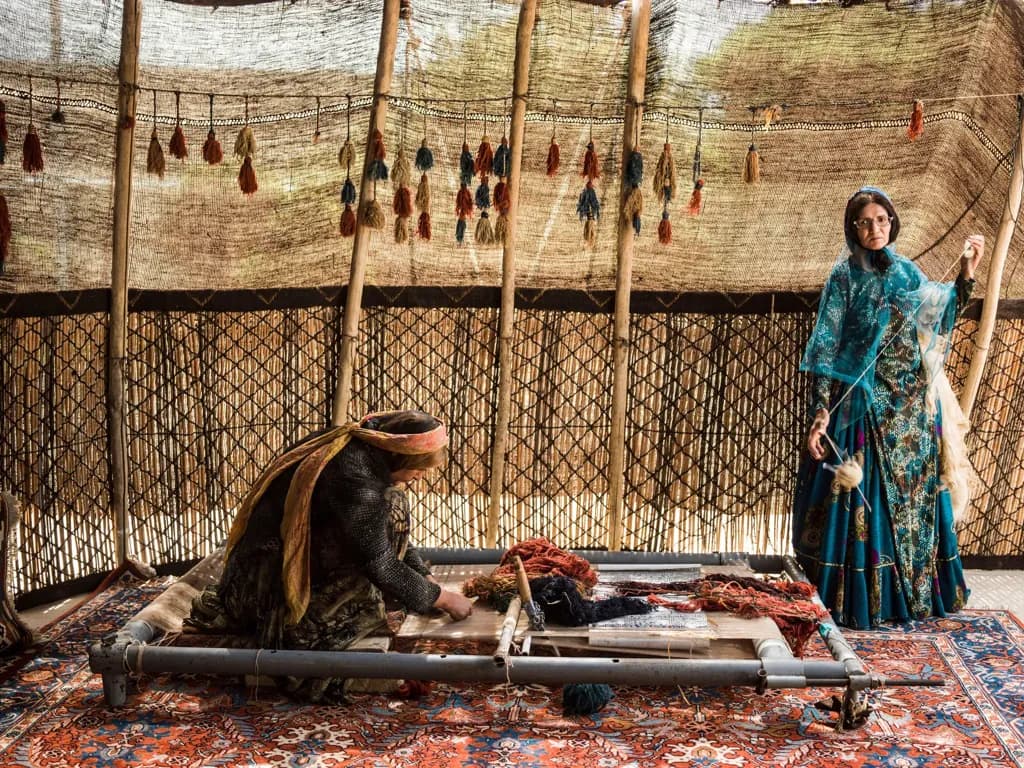Nahavand rugs, originating from the ancient city of Nahavand in western Iran's Hamadan province, represent a distinctive weaving tradition that combines village craftsmanship with sophisticated design elements. These carpets reflect the rich cultural heritage of a region that has been a center of civilization since pre-Islamic times.
The defining characteristic of Nahavand carpets lies in their unique geometric-floral patterns. These rugs typically feature bold geometric designs integrated with stylized floral motifs, often arranged in repeating patterns across the field. A particularly distinctive feature is their interpretation of the Herati pattern, executed with a more geometric approach than their urban counterparts.
The color palette of Nahavand rugs is notably rich and warm, featuring deep blues, vibrant reds, and warm browns as primary colors, often enhanced by ivory backgrounds and subtle touches of green and gold. These colors are known for their exceptional aging characteristics, developing beautiful patinas over time.
The wool used in Nahavand carpets comes from sheep raised in the Zagros Mountains, known for producing particularly durable and lustrous fleece. This high-quality wool, combined with traditional weaving techniques, creates pieces with excellent durability and a distinctive handle.
Technically, these rugs feature moderate knot counts, typically ranging from 100-250 KPSI (knots per square inch). The foundation is usually cotton, providing excellent structural stability. This construction creates carpets that balance refinement with durability.
Modern Nahavand production maintains strong links to traditional methods while incorporating subtle adaptations to contemporary tastes. These pieces often feature slightly simplified versions of classical patterns that work well in modern interiors while preserving their authentic character.
The sizing of Nahavand rugs tends toward medium formats, with particular emphasis on area rugs and runners. These practical dimensions reflect both traditional use patterns and contemporary market demands.
The investment value of Nahavand carpets lies in their combination of artistic merit and practical durability. Each piece represents a significant cultural heritage, where village weaving traditions create distinctive and enduring works of textile art.
These rugs are particularly valued for their versatility in both traditional and contemporary settings. Their geometric-floral patterns and rich colors provide sophisticated accent pieces that work especially well in modern design contexts, where their authentic character creates compelling visual contrast.
Each Nahavand rug represents generations of weaving tradition, where patterns and techniques have been preserved through centuries of cultural evolution. These pieces continue to be prized for their combination of artistic excellence, structural integrity, and authentic village character.



























